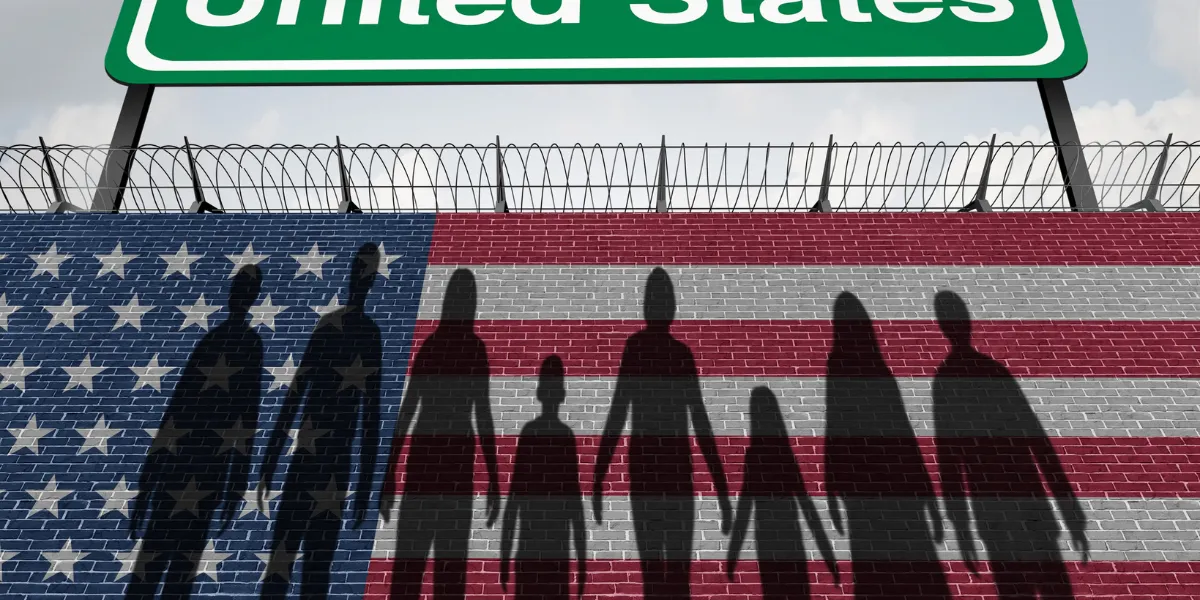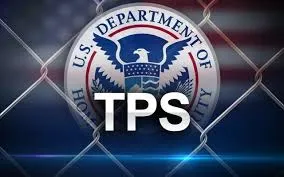Understanding the U.S. Asylum System and Border Issues
How did we get there and how do we fix it?

By: Amanda B. Shaffer, Esq., Partner at The Shapiro Law Firm, LLC.
About the Author: Amanda B. Shaffer is a seasoned immigration attorney licensed in New York, New Jersey, and Florida. For over 12 years, she has been practicing immigration law in New York City alongside her partner and brother-in-law, Aaron Shapiro. Together, they have helped thousands of clients navigate the complexities of the U.S. immigration system. The Shapiro Law Firm, LLC is a boutique law firm focused on immigration and family law, known for treating clients with compassion and empathy. Through her work, Amanda seeks to demystify the U.S. immigration system and advocate for meaningful reform.
What is wrong with the U.S. Asylum System?
The U.S. asylum system faces deep-rooted issues, primarily due to overwhelming delays and inadequate resources. Thousands of asylum seekers experience prolonged wait times, while the lack of efficient processing leads to a backlog that has nearly exceeded the system's capacity. The U.S. asylum process is often a last resort for individuals seeking safety, yet its limited resources hinder its effectiveness.
Border Challenges: Increased Arrivals and Asylum Claims
The U.S.-Mexico border has seen a sharp rise in arrivals, further burdening enforcement and screening systems. Without other viable pathways to immigrate or reunite with family, many people resort to the asylum process as their only option. This high influx has highlighted systemic inefficiencies and amplified the need for sustainable solutions.

Outdated Immigration Laws in Need of Reform
Despite evolving migration patterns, U.S. asylum laws have largely remained the same since the 1990s. While recent executive actions have provided temporary relief, lasting solutions require legislative reform. Modernizing these laws to reflect current realities is crucial for managing migration effectively.
Resource Limitations at the U.S. Border
U.S. Citizenship and Immigration Services (USCIS) primarily operates on filing fees, as there is no direct federal funding for asylum applications. This funding model has created a resource bottleneck, leading to long backlogs and extended wait times.
Why Are So Many People Crossing the U.S. Border?

Economic hardship, political instability, and violence are significant factors driving people to leave their countries. Addressing these root causes may help reduce the pressures on the U.S. asylum system, but more immediate actions are necessary to manage current demands.
The History of U.S. Asylum Law
The origins of U.S. asylum law can be traced back to post-World War II international agreements, including the 1951 Refugee Convention and the 1967 Protocol. Significant changes in asylum law were introduced with the Illegal Immigration Reform and Immigrant Responsibility Act (IIRIRA) of 1996, allowing anyone within U.S. borders to apply for asylum. In 2005, the Real ID Act imposed stricter credibility standards, requiring applicants to provide more evidence for asylum claims.
U.S. Asylum Process: Key Terms and Differences
Defining a “Refugee”
Under U.S. law, asylum seekers must meet the international definition of a “refugee,” someone who has a well-founded fear of persecution based on race, religion, nationality, political opinion, or membership in a particular social group.
Asylee vs. Refugee
Asylees and refugees both seek protection, but their processes differ significantly. Refugees are assigned resettlement locations, while asylees can apply for asylum upon arrival in the U.S. Notably, there are no limits on asylee applications per year, while the President, in consultation with Congress, caps the annual number of refugees admitted.
How U.S. Asylum Law Differs from International Law
U.S. asylum law includes discretionary approval, meaning even those who meet the refugee definition can be denied. This is unlike international law, which mandates that asylum be granted if a person meets refugee criteria. Additionally, U.S. laws do not recognize gender-based asylum claims as grounds for protection, unlike many countries in the European Union.
What Happens at the Border When Someone Fears Returning Home?
When someone at the border expresses fear of returning home, they are referred for a “Credible Fear” (CF) interview. If credible fear is found, they can apply for asylum in immigration court. Those without CF may request a review by an immigration judge.
Alternatives to Asylum
The lack of alternatives to asylum contributes to increased asylum applications. Some limited alternatives include:
Withholding of Removal (WOR)
Applicants can file for WOR alongside asylum applications. WOR has a higher burden of proof but does not require filing within one year of entry, making it an option for individuals who may not qualify for asylum.
Convention Against Torture (CAT)
CAT is available to applicants who can prove they are likely to face torture if returned to their home country. This protection is non-discretionary, meaning if the criteria are met, it must be granted.
Humanitarian Parole
Humanitarian parole allows certain individuals to enter the U.S. temporarily for urgent humanitarian reasons. However, it is only available to those who have been denied a visa and does not grant permanent residency.
Temporary Protected Status (TPS)

TPS provides temporary protection for nationals of countries experiencing armed conflict or environmental disaster. This status is granted for up to 18 months and can be renewed.
Deferred Action
Deferred action offers temporary relief from deportation, typically through programs like Deferred Action for Childhood Arrivals (DACA).
Final Thoughts
The U.S. asylum system requires urgent reforms to address the current challenges at the border and ensure fair treatment for those seeking refuge. Comprehensive legislative action is essential to create a functional immigration framework that meets modern needs.
For more insights into immigration law and to learn about the Shapiro Law Firm’s commitment to client advocacy, visit our website or connect with us on social media.
Contact information:
- Phone: (212) 444-8064
- Email: [email protected]
- Website: theshapirolawyers.com
- YouTube: @theshapirolawyesllc
-Instagram: @theshapirolawyers
